Acupuncture of TCM: Benefits on Face, Back and More
Is acupuncture safe? According to Harvard Health, “acupuncture is generally quite safe, and the complication rate appears to be quite low. “
What is acupuncture?
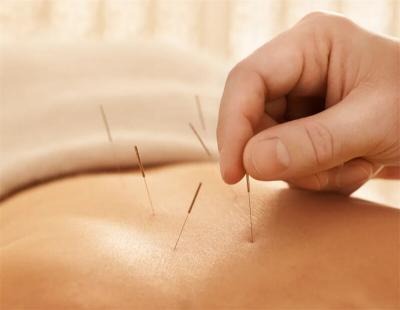
But, in China, if you ask people about Zhen Fa, few people know what you mean. If you say “Zhen Jiu”, then most understand. Jiu means moxibustion and is always together with Zhen (needles). Here we cover Zhen (acupuncture) will talk about Jiu (moxibustion, or moxa) in another article.
What are the acupuncture points (acupoints or Xue Wei)?
Acupoint in Chinese is Xue Wei. Xue means hole or cave, places where human and animals dwell in. Wei means location.
TCM (Traditional Chinese Medicine) says body problems are manifested by the acupoints (pain is felt when pressed by fingers) and treatment on the acupoints could go inside to unblock the problematic meridians to restore the balance of Yin and Yang of body organs.
The acupoints total 720 with 402 applied in medical treatment. Among the 720, there are 108 crucial points with 36 lethal points, meaning impact on these 36 points could lead to death.
The most interesting acupoint (Xue Wei) could be “Ah Yes Point” (A Shi Xue). It is not on a fixed location but usually close to the problematic area. TCM doctors apply the principle of “where there is pain, there is the point”
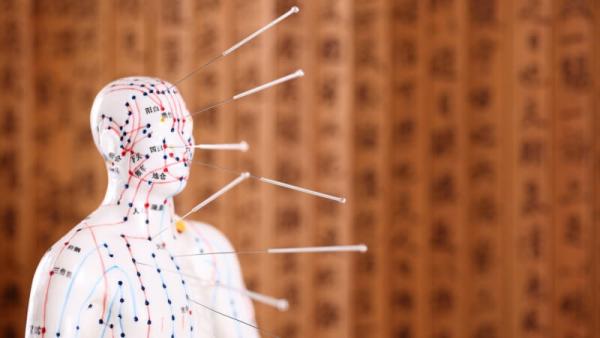
Acupuncture needles and needle phobia
The sizes of the needles are usually 0.25-0.35mm in diameter and 30-40mm long. It is mostly made of stainless steel and discarded after use. So it is safe. In history, silver and other metals were used. As stainless steel is cheaper, harder, and can be made thinner to reduce the pain, stainless steel quickly replaced silver.But still some doctors/acupuncture practitioners stick to silver acupuncture needles (disinfected & re-used), as silver is not rusted and can disinfect the small wound. Furthermore, silver’s heat conductivity is better and is great tool for “warm needles treatment”.
A most interesting acupuncture needle treatment is the fire needle. It is used for people suffering from severe cold Qi blocking meridians. The application involves inserting a red hot needle into the skin. Sounds horrible? But it cures and does not causes infection.
Now there are a few dozen types different types acupuncture needles in the market for different medical treatments in China.
Fear of acupuncture needles: Estimates show that as many as 2 in 3 children and 1 in 4 adults have strong fears about needles. Should you have one of these and hesitant about acupuncture, then you need to do acupressure, cupping and DIY acupuncture including the acupuncture/acupressure mat – see DIY Acupuncture below for more information.
If you are interesting in acupuncture and wish to learn more, check out this documentary 9000 Needles: https://www.163.com/dy/article/I2FHBLDI05560WEZ.html
Acupuncture in the world
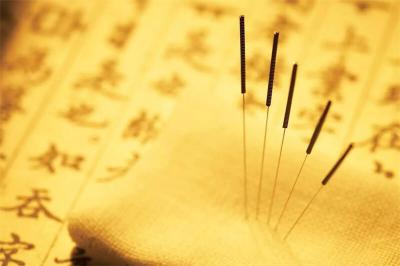
France: Before James, a Frenchman, George Soulié de Morant (early 20th century, consul in China, an expert of China, and later an acupuncturist) took acupuncture to France, now the center for acupuncture in Europe. He was indeed the first in Europe to build a theoretical discourse, to make reference to Chinese medical texts, but also, to practice acupuncture.
In UK, acupuncture course are available in 11+ universities. In Australia, there are more than 3000 acupuncture clinics. In Brazil, accredited acupuncturists reach a number of 100,000, serving in 500 hospitals and 2,500 clinics and offering free acupuncture treatment. In Japan, 70% of hospitals carry acupuncture treatment.
Acupuncture is a treatment for more than 100 types of diseases. According to World Federation of Acupuncture and Moxibustion Societies (based in Beijing, China), 183 countries and regions around the world are studying and using acupuncture. And acupuncture is legally recognized in 59 countries / regions like Australia, France, Singapore and Canada.
During the Beijing Winter Olympics in 2022, many athletes experienced acupuncture, together with other treatment like moxibustion and cupping.
We are all glad to see acupuncture treatment is serving the world – it is a good indication that people around the world are learning from each other in living a healthier life. And we hope, over the years, other TCM (traditional Chinese medicine) practices will contribute to the world.
Acupuncture in China
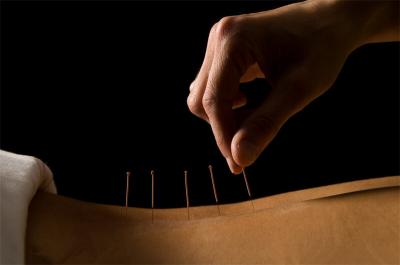
During Warring States period (475-221BC), Chinese medicine went thru a period of fast development, possibly due to the constant wars and pandemics. Numerous medicine books of this time recorded the application of acupuncture. The authority medicine book, Huangdi Neijing, was written, describing acupuncture & cases in large details.
Immediately after Three Kingdoms (3rd Century AD), the first book of acupuncture, Zhenjiu Jiayi Jing, or ABCs of Acupuncture & Moxibustion, was written, laying the foundation of acupuncture study as an independent discipline. In Tang Dynasty (7th-10thcentury), central government opened medical schools with acupuncture as an independent discipline.
During the Song Dynasties (10th – 13thCentury), the first human form bronze model was cast with tiny holes representing the acupuncture points (acupoints). Inside was filled with water/mercury and the holes were covered by wax. In some cases (school exams), clothes were put on the models and students passed tests by inserting the needles into the holes so water/mercury could ooze out. The bronze model became the norm of acupuncture education.
In Ming Dynasty, a Mr. Jizhou Yang compiled the book The Complete Book of Acupuncture. This book was later translated into Japanese, French, German and other languages by missionaries and foreigner working in China in the 19th and early 20th century.
In the last Dynasty of Qing, an edict from Emperor Daoguang stopped the acupuncture study and practice in royal hospital, possibly due to the strong influence of Western medicine after the Opium War.
Bad luck for acupuncture practice continued in Republic of China (1911-1949), as the leaders of China were heavily influenced by Western culture including medicine.
After 1949, acupuncture was revived. In 1975, central government set up classes in Beijing, Shanghai and Nanjing to train acupuncture students for World Health Organization. In 1987, WFAS (World Federation of Acupuncture and Moxibustion Societies) was set up in Beijing. In 2010, Acupuncture and Moxibustion of Traditional Chinese medicine was recognized by UNESCO as Intangible Cultural Heritage. In 2018, Nov.15 was designated as World Acupuncture & Moxibustion Day by UNESCO.
Between 2012 and now (2024), acupuncture and TCM came back to the limelight in China, especially after the Covid pandemic in which TCM played an important part in the curing. Basic education is requested for elementary students. Acupuncturists, together with TCM doctors are paid to educate the elementary school teachers, who will then pass it on to the students. Here are some excerpts from the text book:
“Human body is a holistic mechanism. Different parts of the body are both interlinked and carry its own functions on the principle of Yin and Yang balance. The upper part of body is Yang and lower part Yin. The surface (skin) is Yang and internal parts are Yin. Our back is Yang and abdomen is Yin…” and “many physical problems come from unhealthy eating, so we need to eat healthy…”
There is nothing better than educating people, especially younger generations about staying healthy. It is time to pick up the good old traditions, stay healthy, and find solutions to problems with acupuncture and other TCM approaches.
Acupuncture benefits
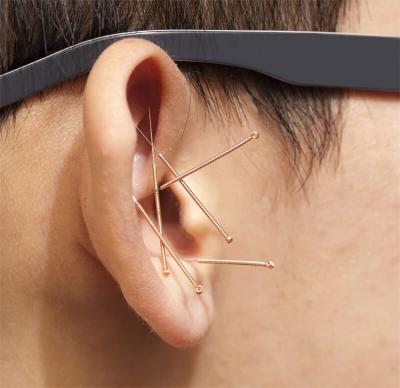
No.1: Acupuncture is a great pain killer & blockage remover
More than 60% of acupuncture patients use it for pain killer. The percentage is much higher outside of China than within China. The reason is the systematic differences of the Western medicine and Chinese medicine.Many western medicine pain killer pills caused problems to other parts of the body. Chinese medicine doctors strongly believe human body should be considered as a whole functioning mechanism, which is inter-linked by Qi (vital energy) and Xue (blood) flowing on the meridians constantly. Whenever there is a pain somewhere, certain meridian(s) are blocked.
Pain means blockage – that is one principle of Chinese medicine. And a major function of acupuncture is to clear the blockage.
"There's nothing magical about acupuncture," Hui says. "Many of these (alternative) techniques, including acupuncture, they all work by activating the body's own self-healing (mechanism)." -- Ka-Kit Hui, MD, founder and director of the UCLA Center for East-West Medicine. (excerpts from Webmd.com)
Across the world, doctors are eager to find a drug-free approach to pain treatment in light of the dangers of opioids -- the class of powerful pain medications that includes codeine, morphine, OxyContin, Percocet, and Vicodin. In March (2016), the CDC called deaths from opioid overdoses "an epidemic." (excerpts from Webmd.com)
Acupuncture has long been recognized as an effective treatment for chronic pains like back and neck pain, osteoarthritis (“degenerative joint disease” or “wear and tear arthritis), chronic headache and shoulder pain. In China, acupuncture is also used for angina or angina pectoris patients and can improve the moods of the patients.
Acupuncture activates the body’s endogenous opioid system so we do not have to rely on the artificial opioids.
Acupuncture is also applied in the treatment for drug addiction. In 1996, the World Health Organization accepted acupuncture as a treatment for drug abuse. For example, auricular acupuncture (ear electro-acupuncture) is effective in treating alcohol and drug abuse in both Europe and the United States. (excerpts from National Library of Medicine)
No. 2 Acupuncture can adjust the functions of human body internal organs
JAMA (Journal of the American Medical Association) and Annals of Internal Medicine published the recent research & studies of electro-acupuncture application on treatment of women’s stress incontinence, opioid-induced constipation.Intestinal flora (gut flora) is an important micro-ecosystem of human body. Imbalance of the I gut flora causes problems including abdominal pain, Acupuncture reduces gas, bloating, stomach pain, acid reflux, inflammation, SIBO (small intestinal bacteria overgrowth) , and stress. It can also boost metabolism, alleviate constipation, and so much more.
When the needles are inserted into the acupoints (acupuncture points), it triggers signals to related meridians which are connected to specific internal organs inside the body. If you are interested in knowing more about the acupuncture’s curing power on the internal organs, read this article from Uptown Acupuncture.
No.3 Acupuncture can adjust the endocrine system
Studies have proven that acupuncture is a mechanical stimulus that can activate local cell functions and neuro-receptors. It also regulates the release of related bio-molecules in the microenvironment, where they can affect each other and further activate the neuroendocrine immune network to achieve holistic regulation. (Excerpts from National Library of Medicine, an official site of the USA government)Acupuncture is a safe and effective treatment to PCOS (irregular periods, causing infertility), without the adverse effects of pharmacologic interventions. Acupuncture therapy increases blood flow to the ovaries and reduces ovarian volume and the number of ovarian cysts. The therapy also increases insulin sensitivity and decreases blood glucose and insulin levels. Acupuncture reduces cortisol levels and assisting in weight loss and anorexia. (rewritten from National Library of Medicine https://pubmed.ncbi.nlm.nih.gov/20230329/)
To read/learn more about the health benefits of acupuncture, go to Johns Hopkins Medicine or the link at the end of the above paragraph. But remember, western medicine and Chinese medicine are based on different systems, just like Apple and Android for mobile phones. It is time to travel to China and learn more about acupuncture.
Things about acupuncture clinic
When you are ready to try acupuncture, first comes the acupuncture practitioner’s qualification. In USA, check the certificate from “National Certification Commission for Acupuncture and Oriental Medicine”. In Australia, it is Australian Acupuncture and Chinese Medicine Association. In UK, it is British Acupuncture Council. For more information, check out the World Federation of Acupuncture and Moxibustion Societies http://en.wfas.org.cn/In China, there are two certificates for acupuncturist. Training Center of Chinese Medical Sciences is the easier one, good for people without an extensive specialized education in TCM (Traditional Chinese Medicine). And the second one is Certificate of Professional Skills in TCM, and this is for the TCM doctors that are educated in TCM courses in full time university or colleges. Theoretically, the better education, the better acupuncturist.
Each person who performs acupuncture has a unique style. Like politics, there are conservatives and liberals in acupuncture. Like finding a right doctor, you will need to ask the acupuncture practitioner similar questions before making the decision. And it makes sense to fix an appointment and visit his/her acupuncture clinic.
At the clinic, your acupuncturist may closely examine and ask you about:
And do not feel strange if the acupuncturist study your face for a few seconds, as most internal problems in the body are reflected on the face with nuances of color and skin irregularities.
Once you build up the rapport with your acupuncturist at his/her clinic, it is time for treatment. It's common to receive a few treatments. Chronic problems, of course, take longer. And as acupuncture in China is less expensive, it is worthwhile to consider a travel visa for China. Let us know and we can help you.Can I do DIY acupuncture?
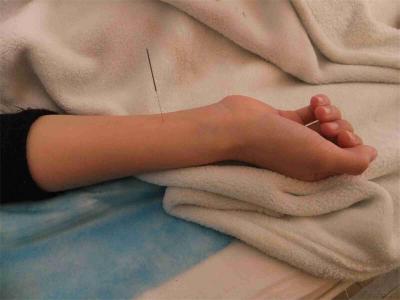
Acupuncture mat, or acupressure mat is a mat with built in numerous small plastic/ or other synthetic material spikes. Some of them come with a supporting pillow, also with spikes used for the acupressure points on the neck.
Does it work? It certainly does. Although the spikes cannot exactly touch all the acupoints of your meridians, some of them can. And the stimulation of the skin certainly helps achieve a better feel after the treatment.
But if you can get a similar smaller acupuncture mat for your feet, it will also work. The acupoints on the feet are much more concentrated than the body. The chance of the spikes touching the right points will be greatly enhanced. Like the acupoints on the body, the points on the feet also correspond to the different internal organs. And that’s why many doctors worldwide recommend walking barefoot, especially on pebbled street.
Another useful acupuncture tool for the feet is a massage foot bath. TCM (Traditional Chinese Medicine) has it “diseases come via mouth, while the cold comes from feet”. It helps a lot, especially with insomnia, by soaking your feet in such a bath while rubbing your feet on the rotating massage stick.
There are also the acupuncture/acupressure bracelets. The bracelets are used for nausea, vomiting, anxiety relief and etc.
Though these alternative approaches cannot replace the actual needles inserted into the body, they can certainly help improve general health. And if you can do the below, you will benefit.
The above information are either translated from authority Chinese sources or rewritten from authority English sources.
Wish you good health. Welcome to travel with us to China and experience or receive acupuncture treatment for a better life.